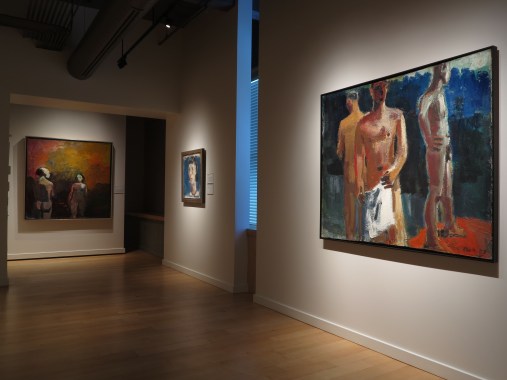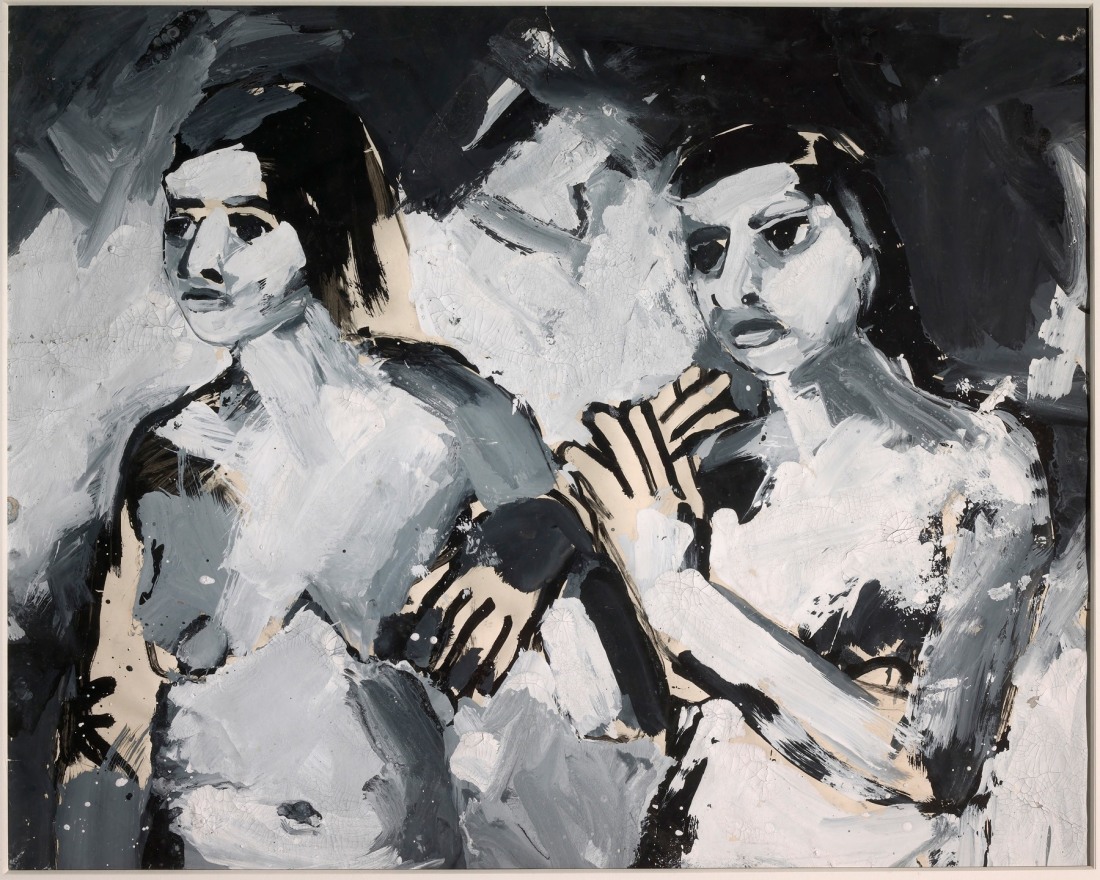
(1938 - 1990)
Joan Brown was a central figure in Post-War Bay Area painting, who created an intensely autobiographical and idiosyncratic body of work that explores human nature, animal instinct and social mores through the use of humor, myth and fantasy. In 1961, Joan Brown returned from her sojourn in Europe and embarked on an immensely charged period of creativity in response to her reflections upon what she had seen and experienced. This period also marked the beginning of her transition away from abstract works towards an emphasis on figurative imagery. Brown’s interests grew to include an appreciation for the Eastern use of flattened perspective, line and intense colors to describe the figure rather than the Western way of modulation. Collectively seen, works from this period are distinguished not only by a strong emphasis on figurative imagery, but also by a brilliant sense of dramatic light and opulent application of pigment.
Brown achieved critical and popular success early in her career. An influential teacher, Brown taught at the University of California, Berkeley, for many years. Joan Brown's work is included in many major private and public collections, including the Museum of Modern Art and the Whitney Museum of American Art, New York; the Hirshhorn Museum and Sculpture Garden, Washington, D.C.; the Albright-Knox Museum, Buffalo; Philadelphia Museum of Art; Los Angeles County Museum of Art; Museum of Fine Arts, Boston and the Fine Arts Museums of San Francisco.

Joan Brown
Couple of Girls
24 x 30
Water-based pigments on paper
1963-64